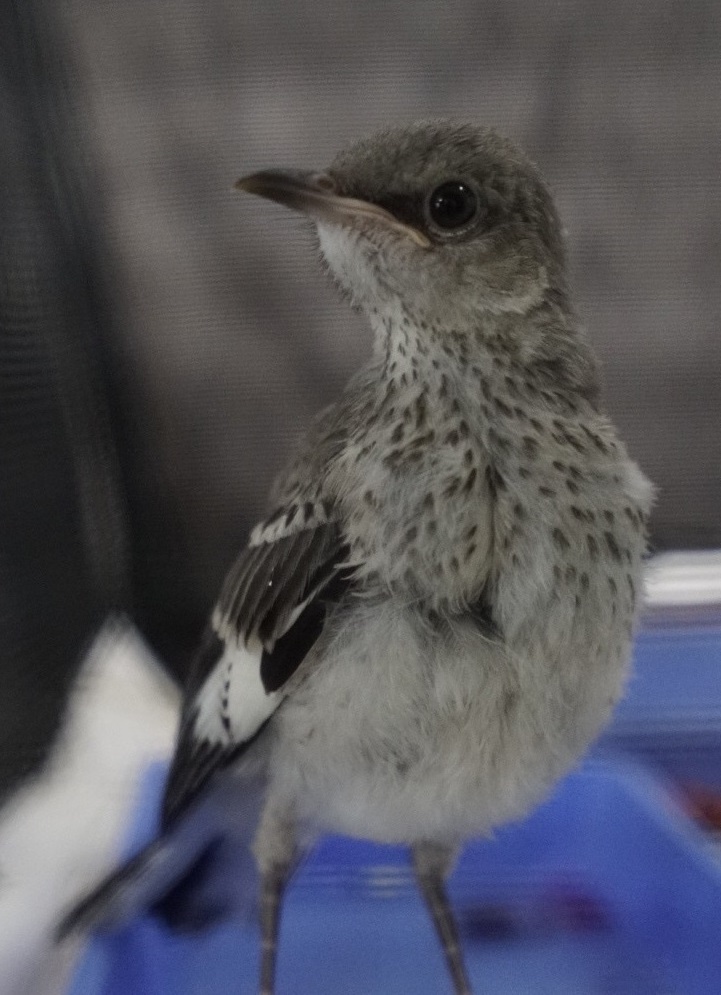Mockingbirds: Masters of Mimicry, with just a Note of Mystery!
By Melissa Hartman

CWC sees many fledgling mockingbirds each year Photo by Jamie Pelayo
Mockingbirds sing one heckuva lot. You can hear them all year long, at
any time of the day, compiling sequences of repeated phrases, including riffs on calls made by other bird species. Like other songbirds, Mockingbirds’ songs are used mainly for courting or to defend territory.
Weighing in at a measly two ounces, a male Northern Mockingbird can produce several hundred phrases, picking up notes acoustically comparable to their own cadence and tone, including calls of other birds such as Jays, Hawks, Orioles, Robins and many others, as well as non-avian impersonations of dogs, cats, frogs—and even car alarms, cell phones and police sirens! They’re not called by their scientific name, Mimus polyglottos—”mimic of many tongues”—for nuthin’.
The Northern Mockingbird is one of 14+ Mockingbird species, many of which “mock,” but why? Some bird species imitate others to frighten their neighbors and steal their food; however, scientists have noted no change in behavior in birds imitated by Mockingbirds. Birds also are known to copy songs as a courtship strategy, but leading bird behaviorists cannot conclusively point to this as a hypothesis for why exactly Mockingbirds mock.
Last year at California Wildlife Center, Northern Mockingbirds were ninth of the ten most frequent species of the 4,300 animal patients seen. We took in 122 for a number of reasons: caught by cats, attacked by raccoons, with broken limbs, injured in window-strikes, orphaned.
As a CWC patient, the Northern Mockingbird is talkative and curious. It’s a pleasure to care for and release them to continue their amazing vocalizing in the wild!
